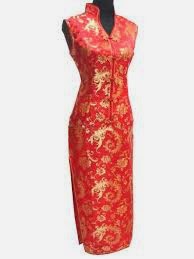WHAT IS A SARI?
A sari is an Indian female garment that is typically wrapped around the waist, with one end draped over the shoulder.
Sari-clad woman in Mysore balancing a basket of chikku on her head
FACTS ABOUT SARI
The sari has a long history in India. The first depictions of sari like costumes can be seen in sculptures dating back to 100 b.c. The variety of colors, patterns, weaves and draping styles make the sari one of the world's most fascinating costumes. Hundreds of regional weaving centers are still engaged in traditional handloom production. Today in India six and a half milion people are engaged in the production of handloom sarees.
The sari is an unstitched length of cloth measuring 42 - 49" wide and 5.5 to 9 yards in length. Ornamental borders and a matching end piece, called the pallu or anchal surround the field of the sari, which can also be either richly ornamented or plain.
Saris often come with a matching piece of cloth for the choli, or tight fitting cropped blouse, either woven on the end or the beggining of the sari, or on a separate piece altogether. Some ultra transparent sarees come with a piece of denser cloth dyed or embellished to match. This piece is usually about 3/4 to 1 meter long. The borders are used for the sleeves and back hem of the choli.
HOW YOU WEAR YOUR SARI IS UP TO YOU!
The sari doesn't have to be worn with a choli or a petticoat. A tight
fitting top of any kind can be worn under the sari, and it's possible to
drape the sari by first drawing the top border around your waist and
tying a knot to form the waistband. There really are no limits with this
simple, yet infinitely adaptible garb. The sari can be draped in
hundreds of different ways - as many as your imagination can manifest.
BY,
DENISE OOI XUE WUEN
:)














